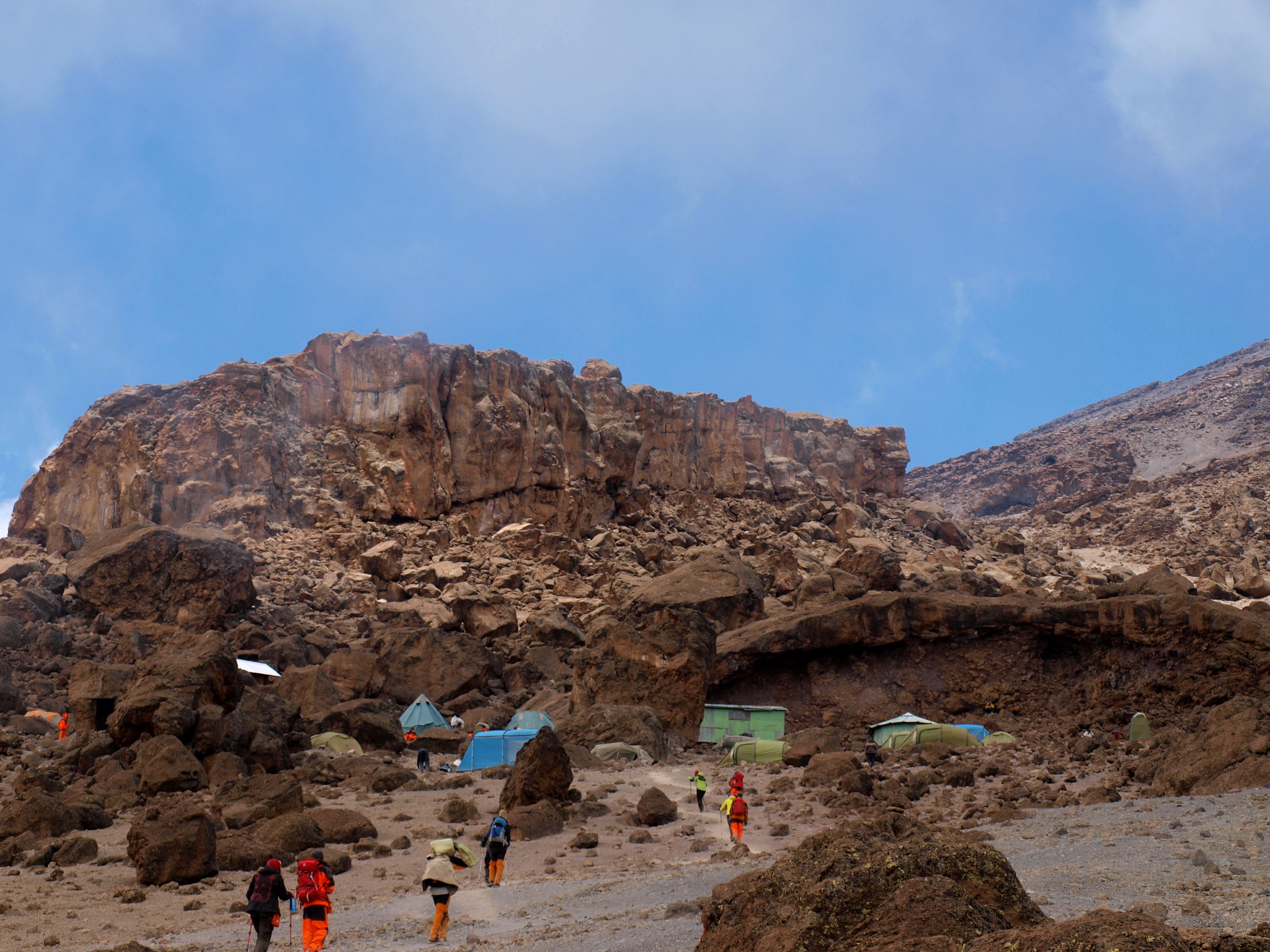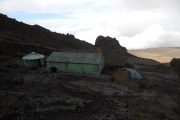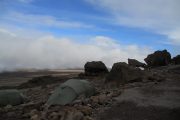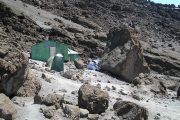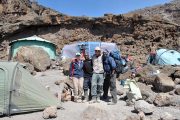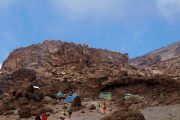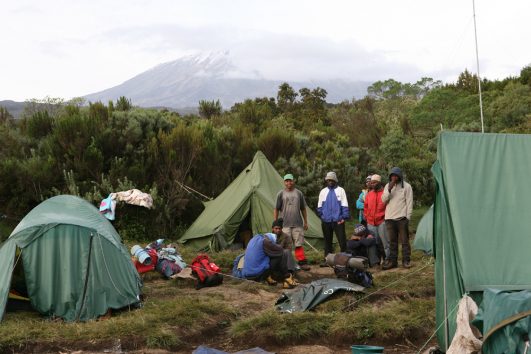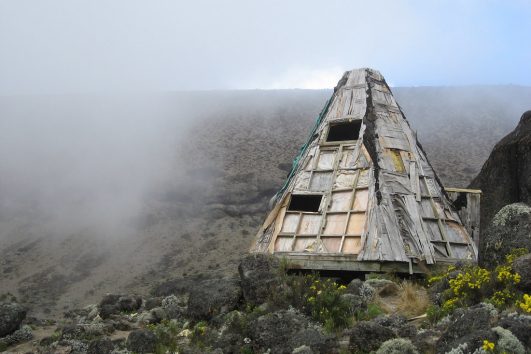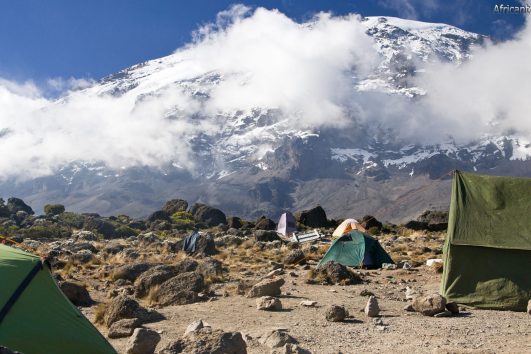As the northern circuit route is a very long route that is rarely used by climbers to summit Mount Kilimanjaro, this campsite is one of the accommodation points along that trail that is very quiet, and has minimum traffic of climbers as most climbers opt for the popular routes that use either Barafu Camp or Kibo Hut camp as the last base before making the trek to the summit.
The entire campsite area is small in size as compared to the other campsite on Mount Kilimanjaro.
School huts Campsite bear no structures apart from pit latrine toilets. Since the camp is located in high altitude area, water exists as dry ice and it is not available in liquid form that can be useful for sanitation unless it rains and rainwater is tapped. The only water you can depend on here is the one carried by porters.
School huts camp only allows accommodation in the form of tents; this means that you have to bring your own tents. It is also one of the final campsites among others like Arrow glacier, Kibo, and Barafu hut which you will come across before reaching the summit and it is one of the few places on Kilimanjaro where it snows.
Location of School Huts Camp
School Huts Camp is located on the slopes of the Kibo volcanic crater, to the East, just a few kilometers north of Kibo huts and east of Reusch Crater.
The School huts campsite falls under Mount Kilimanjaro’s alpine desert vegetation that bears zero vegetation due to extremely low temperatures, high winds, and rocky grounds that cannot support plant life well.
Third Cave to School Huts Camp
On the seventh day, the Northern Circuit Route passes via the School Hut Campsite. Starting at 3,870 meters, the elevation rises to 4,750 meters to the finish line. It takes a total of 5 hours to hike from the starting location at Third Cave Campsite to School Hut Campsite.
Summit Journey from School Huts Camp to Uhuru Peak
From the School Huts (4,750m/15,600ft) to Uhuru Peak (5,895m/19,340ft) and then to Mweka Camp (3,110m/10,200ft).
Start the last ascent to Uhuru Peak, Africa’s highest peak, at midnight. Use your flashlight to hike for the next six to eight hours. You will need gear for both extremes because at these heights, it may get extremely chilly at night but warm up by the end of the trekking day.
The hardest portion of the entire walk is the rise to the crater rim. Up to Gilman’s Point, where the crater rim is located, the walk is quite steep. As far as hikes go, the ascent from Gilman’s to Uhuru Peak is gentle and not too challenging.
The hike is nonetheless lengthy and demanding due to the altitude. You will descend to Kibo Huts after the summit celebrations.
You will descend directly to Mweka Hut from the peak, where lunch will be provided. The duration of this fall is around six hours.
Enjoy your final meal on the mountain and a well-earned rest later that evening. Mweka Hut may be the only location along this route where you can get beer and soda.
Which routes use the School Huts Camp to summit?
School Hut Camp is seldom used because only one route uses the School Huts Camp as the final accommodation point before going to the summit and that is the Northern Circuit Route, which also happens to be the longest route on Mount Kilimanjaro.

